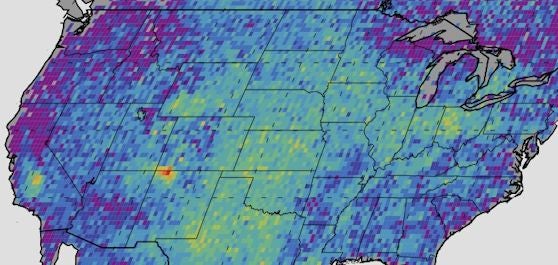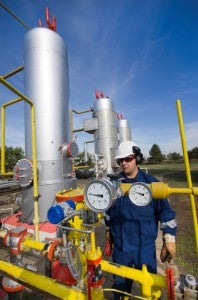
Look up in New Mexico and on most days you’ll see the unmistakable blue skies that make the Southwest so unique.
But there’s also something hovering over the Four Corners that a naked eye can’t detect: A 2,500-square mile cloud of methane, the highest concentration of the heat-trapping pollution anywhere in the United States. The Delaware-sized hot-spot was first reported in a study two years ago.
At the time, researchers were confident the cloud was associated with fossil fuels, but unsure of the precise sources. Was it occurring naturally from the region’s coal beds or coming from a leaky oil and gas industry?










 The United States produces approximately 33 trillion cubic feet of natural gas each year. A majority of this gas is converted to electricity at power plants or used for industrial purposes, but about one third ends up making the journey from the well head, through underground pipelines, and into our homes and businesses. How much of this gas gets lost along the way—whether it’s through leaky equipment or other factors—is important because of the
The United States produces approximately 33 trillion cubic feet of natural gas each year. A majority of this gas is converted to electricity at power plants or used for industrial purposes, but about one third ends up making the journey from the well head, through underground pipelines, and into our homes and businesses. How much of this gas gets lost along the way—whether it’s through leaky equipment or other factors—is important because of the 

